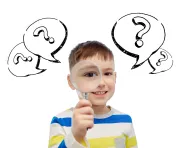Important update from TheSchoolRun
For the past 13 years, TheSchoolRun has been run by a small team of mums working from home, dedicated to providing quality educational resources to primary school parents. Unfortunately, rising supplier costs and falling revenue have made it impossible for us to continue operating, and we’ve had to make the difficult decision to close. The good news: We’ve arranged for another educational provider to take over many of our resources. These will be hosted on a new portal, where the content will be updated and expanded to support your child’s learning.
What this means for subscribers:
- Your subscription is still active, and for now, you can keep using the website as normal — just log in with your usual details to access all our articles and resources*.
- In a few months, all resources will move to the new portal. You’ll continue to have access there until your subscription ends. We’ll send you full details nearer the time.
- As a thank you for your support, we’ll also be sending you 16 primary school eBooks (worth £108.84) to download and keep.
A few changes to be aware of:
- The Learning Journey weekly email has ended, but your child’s plan will still be updated on your dashboard each Monday. Just log in to see the recommended worksheets.
- The 11+ weekly emails have now ended. We sent you all the remaining emails in the series at the end of March — please check your inbox (and spam folder) if you haven’t seen them. You can also follow the full programme here: 11+ Learning Journey.
If you have any questions, please contact us at [email protected]. Thank you for being part of our journey it’s been a privilege to support your family’s learning.
*If you need to reset your password, it will still work as usual. Please check your spam folder if the reset email doesn’t appear in your inbox.
Supporting KS3 science at home

Life and living processes
Your child will learn about cells and cell functions and how these relate to life processes in a variety of organisms.
They will investigate humans as organism, looking at digestion, the role of enzymes and how products are absorbed into the bloodstream. They will also explore the rest of the human body – the skeleton, joints and antagonistic muscle pairs (for example, biceps and triceps), reproduction and adolescence, the respiratory system, and the effect of alcohol, solvents, and other drug abuse on health.


FREE Year 6 to 7 transition packs
- English & Maths transition packs
- Practise journalistic writing, figurative language, persuasive text and more
- Revise key maths methods and concepts
Finally, they will be taught about green plants and their environment. They will study photosynthesis, classification and breeding and ways to protect living things and the environment.
Materials
Children will learn how solids, gases and liquids can be characterised by melting and boiling point and density, how chemical reactions form compounds and how solubility changes with temperature. They will learn to recognise chemical changes in everyday situations (ripening fruit, cooking food etc).
They will also explore metals and how they react with oxygen, water, acids and oxides of other metals, and what the products of these reactions are.
Physical processes
Children will learn about series and parallel circuits, how to measure current and voltage, magnetic fields, and that ‘like' magnetic poles repel and ‘unlike' poles attract.
Forces and motion is another key topic. Children will learn how to determine speed and that the weight of an object on Earth is the result of the gravitational attraction between its mass and that of the Earth. They will also learn about the positions of the Earth, sun and moon and about the use of artificial satellites and probes to observe space.
In exploring light and sound, children will learn about how light and sound travels, that white light can be dispersed to give a range of colours, that sound causes the eardrum to vibrate and that people have different audible ranges.
Finally, children will learn about energy resources and conservation - the distinction between renewable and non-renewable resources and how temperature can lead to transfer of energy.
Help your child at home
- Discuss the selective breeding of fruit and vegetables to suit the consumer market (specific size of carrot, seedless grapes etc).
- Note when environmental topics are featured in the news. Use this as an opportunity to consider some of the issues in the light of what your child is learning at school.
- Get cooking! Use any opportunity to point out the chemical reactions that might be occurring, such as using lemon juice to prevent avocado turning brown, using baking powder to make cake. There's plenty of information on these processes in the Planet Science Diner at Planet Science.
- Check out the Science Bob website to learn how to build an electromagnet.
- Invest in Science: a children's encyclopedia (Dorling Kindersley, £17.99). It’s the perfect companion for homework or projects.








